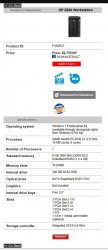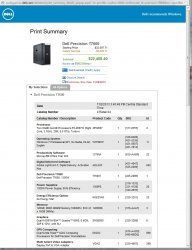I'd put money on it supporting 128GB with 4x32GB DIMMs. Apple probably just couldn't get them at 1866MHz yet.
I believe the Xeon E5's can happily support 32gb modules, so this shouldn't be an issue. Are there any 32gb 1866mhz ECC RAM modules out there yet?
I was a little disappointed to see only 4 RAM slots, but then the whole ethos of the new Mac Pro is OpenCL, in which case you're hopefully taking as much advantage of the VRAM on the GPUs, at which point your RAM as mostly for queueing up data for processing.
Wasn't the Apple RAM compression to do with only compressing background app usage?
Sort of; the purpose of the compressed memory is to avoid paging memory out to disk to make room by instead compressing it. While idle/cached apps and files are definitely prime candidates for this, apps with large memory requirements could also have chunks of their memory idle and liable to paged out.
If you have an app that demands more than 64gb of actively in-use RAM then sure, compression may not help, but I think we'll get pretty close to the 50% saving for most real-world uses, which is pretty sweet. Means if you can get the pro and can leave with 18gb/24gb of effective RAM then you can just make do with what the new Mac Pro comes with, and upgrade later.
There are other important tools in Mavericks as well such as apps being able to mark memory as used for cache (i.e - can be discarded and re-built as required). If professional apps actually start to adopt this then it could also help with getting most out of RAM, as instead of trying to compress or page out such regions of memory OS X can just discard them and inform the application. But yeah, it's an API so we'll have to wait for it to gain traction.
one reason why the inactive memory is being compressed is so that it does not have to be paged out to disk. That should leave more disk I/O bandwidth to actually moving user data as opposed to OS virtual paging maintenance.
One thing that hasn't been mentioned is whether memory that
is paged out to disk will do so in its compressed form. While having to resort to paging is always bad, if only half the amount of bits need to be read back from disk then that'll be improved as well; still suffers comparatively huge latency, but with a Fusion Drive you'd be able to get more virtual RAM space out of an SSD, and page out or in in half the time (+ latency). So it's a pretty exciting feature all round IMO, especially for laptop and Mac Mini users.



